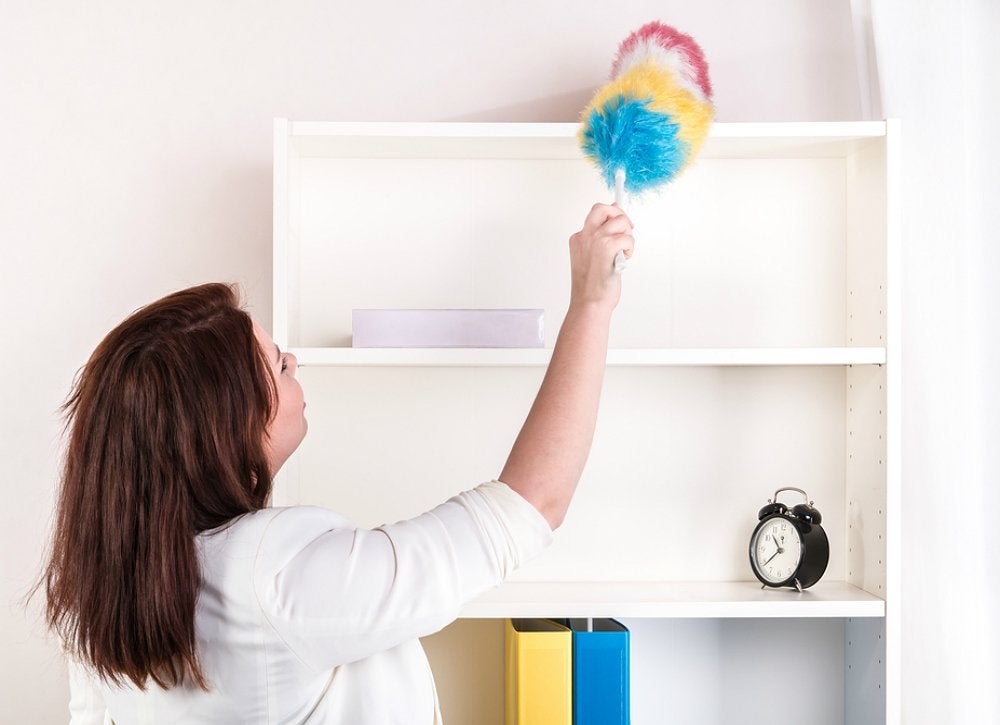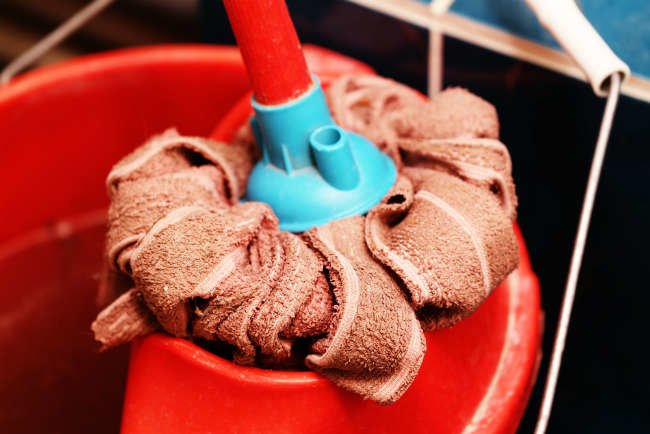We may earn revenue from the products available on this page and participate in affiliate programs. Learn More ›
Soak Those Sponges

Dirty sponges aren’t just smelly, they can also harbor germs. Banish them with a five-minute soak in a solution of ¾ cup bleach to 1 gallon of water. You can also run sponges through the dishwasher on the normal setting, or microwave a damp sponge on high for one to two minutes.
Vacuum Vitality

Vacuum the living room, dump out the debris, and you’re done, right? Wrong. You should tidy your vacuum cleaner after each use to guarantee peak performance in the future. Replace the bag regularly—or if you machine is bagless, empty the dust collector and wipe it down. Also dust off hoses and attachments with damp cloth. Don’t forget to check the beater bar and roller to remove any debris or hair.
Mop Up

You probably keep your floors clean with regular mopping. But when you’re finished, don’t just wring the water out and store until next time. Instead, give your mop a good soak in hot, soapy water, and then rinse well in hot water. Wring it out thoroughly and let it dry standing up. Removable mop heads can—and should—be run through the wash on the delicate cycle with bleach to disinfect.
Throw in the (Dish) Towel

Kitchen towels get damp, dirty, and downright smelly over time. The solution: Frequent machine-washing on the hottest cycle. For extra cleaning power, set the machine for an at least one-hour soak cycle, adding a cup of white vinegar to the water along with the usual amount of laundry detergent. Repeat monthly to keep towels odor-free.
Scrub-a-Dub-Dub

Scrub brushes are the go-to tools for fighting baked-on grease and gunk, but a tough session of grime-fighting can leave the bristles pretty mucked up. Rinse in hot water after each use, and gently knead the bristles to dislodge debris. Allow the brush to dry sitting upright in the dish drainer, or hanging from a hook. Brushes can also be run through the dishwasher on the normal setting.
Broom Clean

Whether you sweep with an old-fashioned corn broom or a new-fangled microfiber version, brooms benefit from regular cleaning. A good shake outside the house will get rid of most trapped dust and debris. For a deeper clean, swish the broom in a bucket of hot, soapy water and rinse thoroughly with cold running water. Don’t let the broom soak; this can weaken the bristles. Hang to dry, or lean with the broom head up before storing.
Dust You Must

Dust, cobwebs, and small particles can become trapped in a duster, hampering its effectiveness. Dislodge debris by sticking the duster in a paper bag with rock salt and shaking vigorously for two to three minutes. Empty out the rock salt and dust into the trash, and shake off the duster outside to remove any remaining particles.
Related: Why You Should Sprinkle Salt Onto Your Cutting Board—and Into Your Coffee

Everything You Need for a Lush and Healthy Lawn
Keeping your grass green and your plants thriving doesn’t just take a green thumb—it starts with the right tools and supplies.

